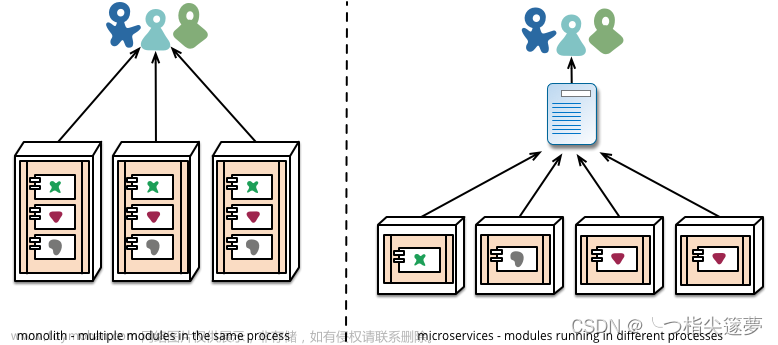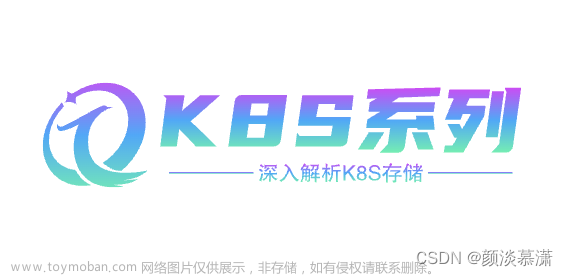------> 课程视频同步分享在今日头条和B站
大家好,我是博哥爱运维,在k8s上我们如何控制访问权限呢,答案就是Role-based access control (RBAC) - 基于角色(Role)的访问控制,(RBAC)是一种基于组织中用户的角色来调节控制对 计算机或网络资源的访问的方法。
在早期的K8s版本,RBAC还未出现的时候,整个K8s的安全是较为薄弱的,有了RBAC后,我们可以对K8s集群的访问人员作非常明细化的控制,控制他们能访问什么资源,以只读还是可以读写的形式来访问,目前RBAC是K8s默认的安全授权标准,所以我们非常有必要来掌握RBAC的使用,这样才有更有力的保障我们的K8s集群的安全使用,下面我们将以生产中的实际使用来大家了解及掌握RBAC的生产应用。
RBAC里面的几种资源关系图,下面将用下面的资源来演示生产中经典的RBAC应用
|--- Role --- RoleBinding 只在指定namespace中生效
ServiceAccount ---|
|--- ClusterRole --- ClusterRoleBinding 不受namespace限制,在整个K8s集群中生效
在我看来,RBAC在K8s上的用途主要分为两大类:
第一类是保证在K8s上运行的pod服务具有相应的集群权限,如gitlab的CI/CD,它需要能访问除自身以外其他pod,比如gitlab-runner的pod的权限,再比如gitlab-runner的pod需要拥有创建新的临时pod的权限,用以来构建CI/CD自动化流水线,这里大家没用过不懂没关系,先简单了解下就可以了,在本课程后面基于K8s及gitlab的生产实战CI/CD内容会给大家作详细实战讲解;
第二类是创建能访问K8s相应资源、拥有对应权限的kube-config配置给到使用K8s的人员,来作为连接K8s的授权凭证
第一类的实战这里先暂时以早期的helm2来作下讲解,helm是一个快捷安装K8s各类资源的管理工具,通过之前给大家讲解的,一个较为完整的服务可能会存在deployment,service,configmap,secret,ingress等资源来组合使用,大家在用的过程中可能会觉得配置使用较为麻烦,这时候helm就出现了,它把这些资源都打包封装成它自己能识别的内容,我们在安装一个服务的时候,就只需要作下简单的配置,一条命令即可完成上述众多资源的配置安装,titller相当于helm的服务端,它是需要有权限在K8s中创建各类资源的,在初始安装使用时,如果没有配置RBAC权限,我们会看到如下报错:
root@node1:~# helm install stable/mysql
Error: no available release name found
这时,我们可以来快速解决这个问题,创建sa关联K8s自带的最高权限的ClusterRole(生产中建议不要这样做,权限太高有安全隐患,这个就和linux的root管理帐号一样,一般都是建议通过sudo来控制帐号权限)文章来源:https://www.toymoban.com/news/detail-758754.html
kubectl create serviceaccount --namespace kube-system tiller
kubectl create clusterrolebinding tiller-cluster-rule --clusterrole=cluster-admin --serviceaccount=kube-system:tiller
kubectl patch deploy --namespace kube-system tiller-deploy -p '{"spec":{"template":{"spec":{"serviceAccount":"tiller"}}}}'
第二类,我这里就直接以我在生产中实施的完整脚本来做讲解及实战,相信会给大家带来一个全新的学习感受,并能很快掌握它们:文章来源地址https://www.toymoban.com/news/detail-758754.html
- 创建对指定namespace有只读权限的kube-config
#!/bin/bash
export KUBECONFIG=/root/.kube/config
BASEDIR="$(dirname "$0")"
folder="$BASEDIR/kube_config"
echo -e "All namespaces is here: \n$(kubectl get ns|awk 'NR!=1{print $1}')"
echo "endpoint server if local network you can use $(kubectl cluster-info |awk '/Kubernetes/{print $NF}')"
clustername=$1
endpoint=$(echo "$2" | sed -e 's,https\?://,,g')
if [[ -z "$endpoint" || -z "$clustername" ]]; then
echo "Use "$(basename "$0")" CLUSTERNAME ENDPOINT";
exit 1;
fi
# https://github.com/kubernetes/kubernetes/blob/master/CHANGELOG/CHANGELOG-1.24.md#urgent-upgrade-notes
echo "---
apiVersion: v1
kind: ServiceAccount
metadata:
name: all-readonly-${clustername}
namespace: kube-system
---
apiVersion: v1
kind: Secret
metadata:
name: all-readonly-secret-sa-$clustername-user
namespace: kube-system
annotations:
kubernetes.io/service-account.name: "all-readonly-${clustername}"
type: kubernetes.io/service-account-token
---
apiVersion: rbac.authorization.k8s.io/v1
kind: ClusterRole
metadata:
name: all-readonly-${clustername}
rules:
- apiGroups:
- ''
resources:
- configmaps
- endpoints
- persistentvolumes
- persistentvolumeclaims
- pods
- replicationcontrollers
- replicationcontrollers/scale
- serviceaccounts
- services
- nodes
verbs:
- get
- list
- watch
- apiGroups:
- ''
resources:
- bindings
- events
- limitranges
- namespaces/status
- pods/log
- pods/status
- replicationcontrollers/status
- resourcequotas
- resourcequotas/status
verbs:
- get
- list
- watch
- apiGroups:
- ''
resources:
- namespaces
verbs:
- get
- list
- watch
- apiGroups:
- apps
resources:
- controllerrevisions
- daemonsets
- deployments
- deployments/scale
- replicasets
- replicasets/scale
- statefulsets
- statefulsets/scale
verbs:
- get
- list
- watch
- apiGroups:
- autoscaling
resources:
- horizontalpodautoscalers
verbs:
- get
- list
- watch
- apiGroups:
- batch
resources:
- cronjobs
- jobs
verbs:
- get
- list
- watch
- apiGroups:
- extensions
resources:
- daemonsets
- deployments
- deployments/scale
- ingresses
- networkpolicies
- replicasets
- replicasets/scale
- replicationcontrollers/scale
verbs:
- get
- list
- watch
- apiGroups:
- policy
resources:
- poddisruptionbudgets
verbs:
- get
- list
- watch
- apiGroups:
- networking.k8s.io
resources:
- networkpolicies
verbs:
- get
- list
- watch
- apiGroups:
- metrics.k8s.io
resources:
- pods
verbs:
- get
- list
- watch
- apiGroups:
- storage.k8s.io
resources:
- storageclasses
verbs:
- get
- list
- watch
---
apiVersion: rbac.authorization.k8s.io/v1
kind: ClusterRoleBinding
metadata:
name: all-readonly-${clustername}
roleRef:
apiGroup: rbac.authorization.k8s.io
kind: ClusterRole
name: all-readonly-${clustername}
subjects:
- kind: ServiceAccount
name: all-readonly-${clustername}
namespace: kube-system" | kubectl apply -f -
mkdir -p $folder
#tokenName=$(kubectl get sa all-readonly-${clustername} -n $namespace -o "jsonpath={.secrets[0].name}")
tokenName="all-readonly-secret-sa-$clustername-user"
token=$(kubectl get secret $tokenName -n kube-system -o "jsonpath={.data.token}" | base64 --decode)
certificate=$(kubectl get secret $tokenName -n kube-system -o "jsonpath={.data['ca\.crt']}")
echo "apiVersion: v1
kind: Config
preferences: {}
clusters:
- cluster:
certificate-authority-data: $certificate
server: https://$endpoint
name: all-readonly-${clustername}
users:
- name: all-readonly-${clustername}
user:
as-user-extra: {}
client-key-data: $certificate
token: $token
contexts:
- context:
cluster: all-readonly-${clustername}
user: all-readonly-${clustername}
name: ${clustername}
current-context: ${clustername}" > $folder/${clustername}-all-readonly.conf
- 创建对指定namespace有所有权限的kube-config(在已有的namespace中创建)
#!/bin/bash
export KUBECONFIG=/root/.kube/config
BASEDIR="$(dirname "$0")"
folder="$BASEDIR/kube_config"
echo -e "All namespaces is here: \n$(kubectl get ns|awk 'NR!=1{print $1}')"
echo "endpoint server if local network you can use $(kubectl cluster-info |awk '/Kubernetes/{print $NF}')"
namespace=$1
endpoint=$(echo "$2" | sed -e 's,https\?://,,g')
if [[ -z "$endpoint" || -z "$namespace" ]]; then
echo "Use "$(basename "$0")" NAMESPACE ENDPOINT";
exit 1;
fi
# https://github.com/kubernetes/kubernetes/blob/master/CHANGELOG/CHANGELOG-1.24.md#urgent-upgrade-notes
echo "---
apiVersion: v1
kind: ServiceAccount
metadata:
name: $namespace-user
namespace: $namespace
---
apiVersion: v1
kind: Secret
metadata:
name: secret-sa-$namespace-user
namespace: $namespace
annotations:
kubernetes.io/service-account.name: "$namespace-user"
type: kubernetes.io/service-account-token
---
kind: Role
apiVersion: rbac.authorization.k8s.io/v1
metadata:
name: $namespace-user-full-access
namespace: $namespace
rules:
- apiGroups: ['', 'extensions', 'apps', 'metrics.k8s.io', 'networking.k8s.io']
resources: ['*']
verbs: ['*']
- apiGroups: ['batch']
resources:
- jobs
- cronjobs
verbs: ['*']
---
kind: RoleBinding
apiVersion: rbac.authorization.k8s.io/v1
metadata:
name: $namespace-user-view
namespace: $namespace
subjects:
- kind: ServiceAccount
name: $namespace-user
namespace: $namespace
roleRef:
apiGroup: rbac.authorization.k8s.io
kind: Role
name: $namespace-user-full-access" | kubectl apply -f -
mkdir -p $folder
#tokenName=$(kubectl get sa $namespace-user -n $namespace -o "jsonpath={.secrets[0].name}")
tokenName="secret-sa-$namespace-user"
token=$(kubectl get secret $tokenName -n $namespace -o "jsonpath={.data.token}" | base64 --decode)
certificate=$(kubectl get secret $tokenName -n $namespace -o "jsonpath={.data['ca\.crt']}")
echo "apiVersion: v1
kind: Config
preferences: {}
clusters:
- cluster:
certificate-authority-data: $certificate
server: https://$endpoint
name: $namespace-cluster
users:
- name: $namespace-user
user:
as-user-extra: {}
client-key-data: $certificate
token: $token
contexts:
- context:
cluster: $namespace-cluster
namespace: $namespace
user: $namespace-user
name: $namespace
current-context: $namespace" > $folder/$namespace.kube.conf
- 在已有sa上附加其他命名空间的权限
# same ServiceAccount:" test-a-user " default can contorl my own namespace:" test-a " and config later to contorl other namespace: "test-b"
apiVersion: rbac.authorization.k8s.io/v1
kind: Role
metadata:
name: test-b-user-full-access
namespace: test-b
rules:
- apiGroups: ['', 'extensions', 'apps', 'metrics.k8s.io', 'networking.k8s.io']
resources: ['*']
verbs: ['*']
- apiGroups: ['batch']
resources:
- jobs
- cronjobs
verbs: ['*']
---
apiVersion: rbac.authorization.k8s.io/v1
kind: RoleBinding
metadata:
name: test-b-user-full-access-both-test-a-user
namespace: test-b
roleRef:
apiGroup: rbac.authorization.k8s.io
kind: Role
name: test-b-user-full-access
subjects:
- kind: ServiceAccount
name: test-a-user
namespace: test-a
到了这里,关于第22关 深入解析K8s中的RBAC角色访问控制策略的文章就介绍完了。如果您还想了解更多内容,请在右上角搜索TOY模板网以前的文章或继续浏览下面的相关文章,希望大家以后多多支持TOY模板网!














